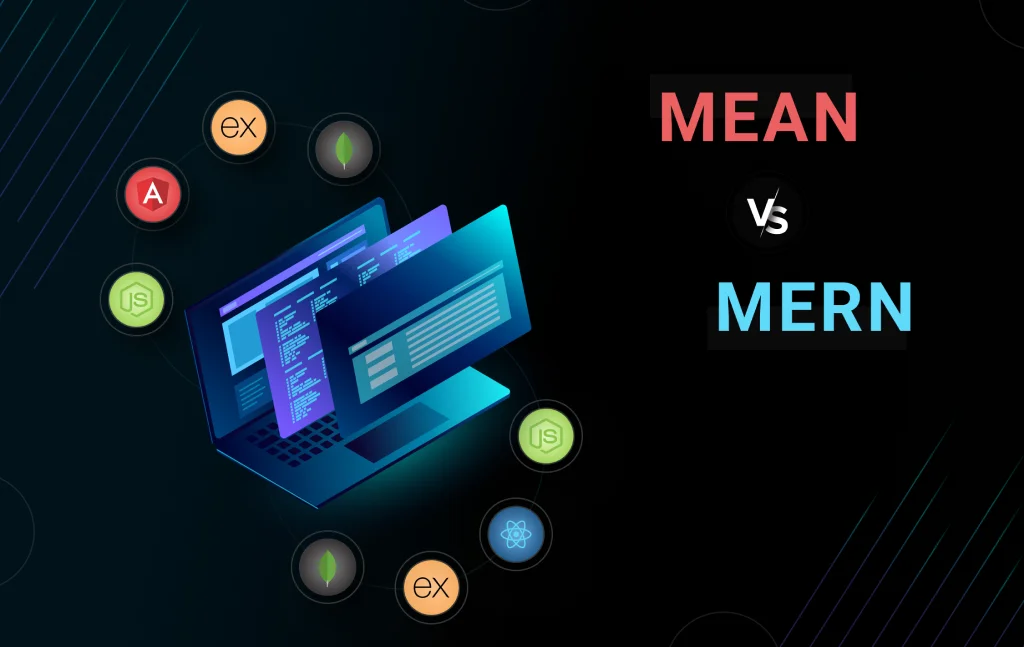MERN vs MEAN: Which Stack is made for You?
 Abhishek Sharma
Abhishek Sharma
MERN and MEAN are two popular full-stack development stacks that have taken the web development world by storm. Both offer a powerful combination of technologies to build dynamic and interactive web applications. But with so much overlap, choosing between them can be confusing. This blog post aims to shed light on the key differences between MERN and MEAN, helping you decide which stack best suits your project needs.
The Core Technologies
Both MERN and MEAN share three core technologies:
Node.js: The server-side JavaScript runtime environment that powers the back-end.
Express.js: A lightweight web framework built on top of Node.js for building APIs and web servers.
MongoDB: A NoSQL database known for its flexibility and scalability.
The main difference lies in the front-end framework:
MERN: Utilizes React, a flexible and component-based JavaScript library for building user interfaces.
MEAN: Leverages Angular, a comprehensive and structured framework based on TypeScript.
Key Differences
Here's a breakdown of some key differences between the two stacks:
Front-end Framework:
React: Offers flexibility and a more declarative approach, making it ideal for rapid development and dynamic UIs.
Angular: Provides a structured and opinionated framework with built-in features and tools, leading to faster development for complex applications.
Learning Curve:
React: Has a gentler learning curve due to its simpler syntax and component-based approach.
Angular: Requires more upfront learning due to its complex structure and TypeScript usage.
Performance:
React: Generally considered to be faster due to its virtual DOM and efficient rendering mechanisms.
Angular: Offers strong performance optimization features and can be optimized for specific use cases.
Community and Popularity:
React: Boasts a larger and more active community, leading to wider support and readily available resources.
Angular: Has a strong and established community, but may have slightly fewer readily available resources.
Choosing the Right Stack
The best stack for your project depends on various factors, including:
Project Requirements: Consider the complexity of your application, the need for real-time features, and the desired level of flexibility.
Team Expertise: Choose a stack that your development team is comfortable with to ensure efficient development and maintenance.
Project Scalability: If you anticipate significant growth in the future, both stacks offer scalability options.
Conclusion
MERN and MEAN are both powerful full-stack development stacks with their own strengths and weaknesses. By understanding the key differences and considering your project's specific needs, you can make an informed decision about which stack will best serve your development goals.
Subscribe to my newsletter
Read articles from Abhishek Sharma directly inside your inbox. Subscribe to the newsletter, and don't miss out.
Written by

Abhishek Sharma
Abhishek Sharma
Abhishek is a designer, developer, and gaming enthusiast! He love creating things, whether it's building websites, designing interfaces, or conquering virtual worlds. With a passion for technology and its impact on the future, He is curious about how AI can be used to make work better and play even more fun.